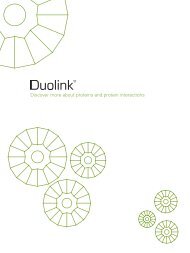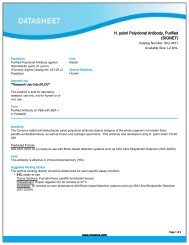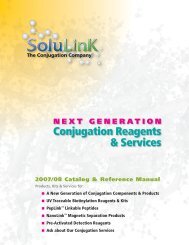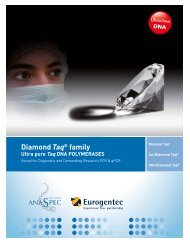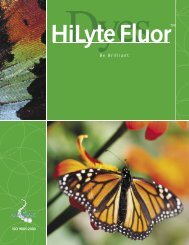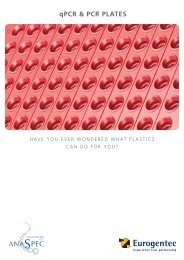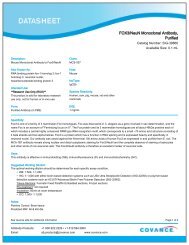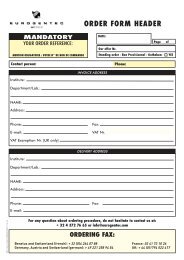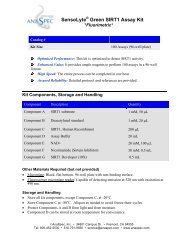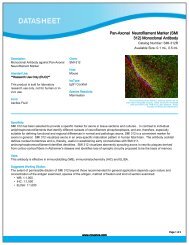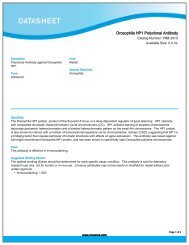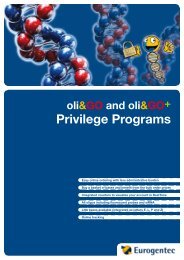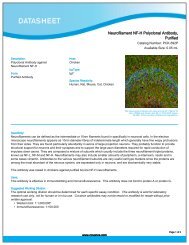Safety information - Eurogentec
Safety information - Eurogentec
Safety information - Eurogentec
You also want an ePaper? Increase the reach of your titles
YUMPU automatically turns print PDFs into web optimized ePapers that Google loves.
20<br />
Guidelines for successful RT-qPCR<br />
The RT reaction should be set up in a clean environment to avoid contamination; cleaning<br />
solutions are available to avoid any RNase contamination. We also recommend working<br />
with RNase free plastics. The tubes containing the reaction should be maintained on ice<br />
during the set up of the reaction.<br />
When setting up a qPCR reaction, it is always recommended preparing a Reaction mix<br />
containing all the reagents required for the reaction in order to minimize the differences<br />
across the 96-well plate and allow for more accurate pipetting (as the volume required<br />
per sample is usually very small). The reaction mix should ideally be prepared in a<br />
separate room from the one where DNA samples have been prepared in order to avoid<br />
any contamination.<br />
The DNA samples should always be added to the side of each well before the reaction mix<br />
and then rinsed down while adding the reaction mix. As the reaction mix is heavier than<br />
the DNA, the DNA will be mixed within the reaction mix. The plate can gently be shaken<br />
on a plate shaker and spun before placing it on the machine. This is not an essential step<br />
but will ensure that the reactions are thoroughly mixed and collected at the bottom of the<br />
wells. It is useful to also check the wells for bubbles, as bubbles at the bottom of the well<br />
can produce unusual plots on the results, when using machines that read from the top.<br />
When sealing the PCR plates, it is important to ensure that it has been correctly done.<br />
If optical films are used, fingerprints and marks should be avoided on the top of the film.<br />
The qPCR machine used should be programmed according to the manufacturers<br />
instruction manual.<br />
The thermal cycling conditions described in this manual should be used as a good<br />
starting point, but optimization of these conditions may be required for certain assays to<br />
achieve optimal results.<br />
Manual for MiRmaid miRNA precursor qRT-PCR Primer Set I www.eurogentec.com I info@eurogentec.com



